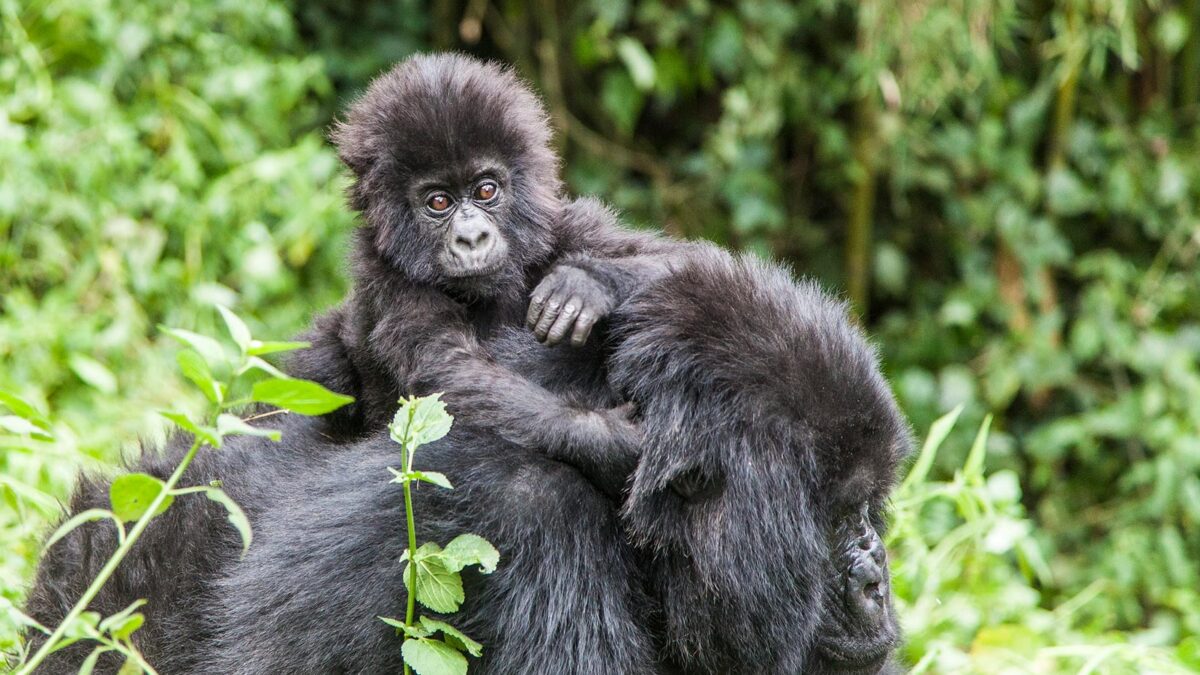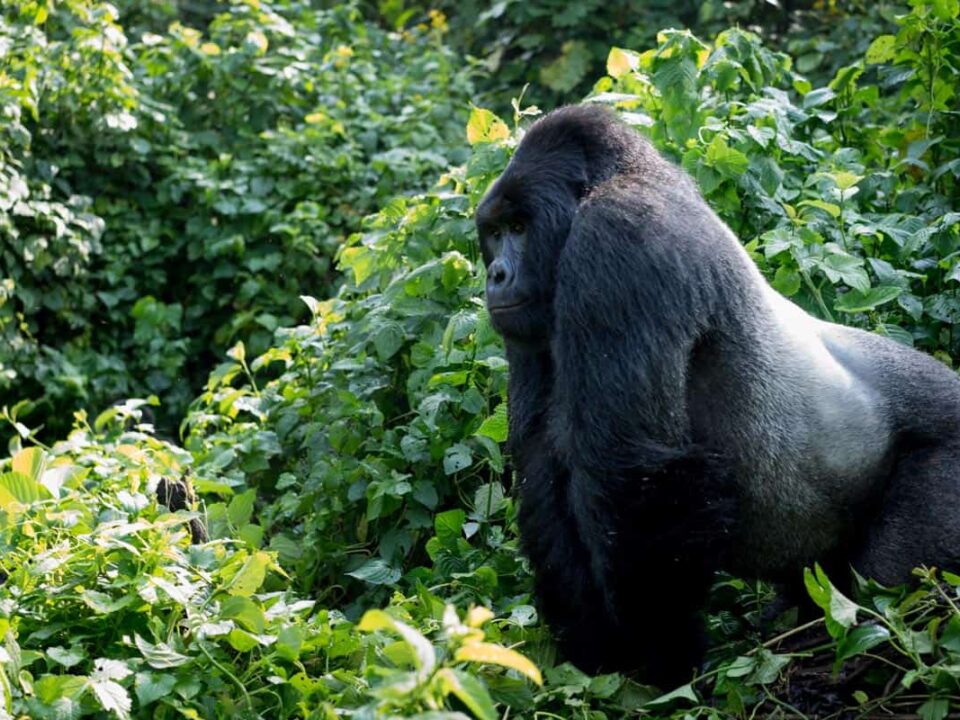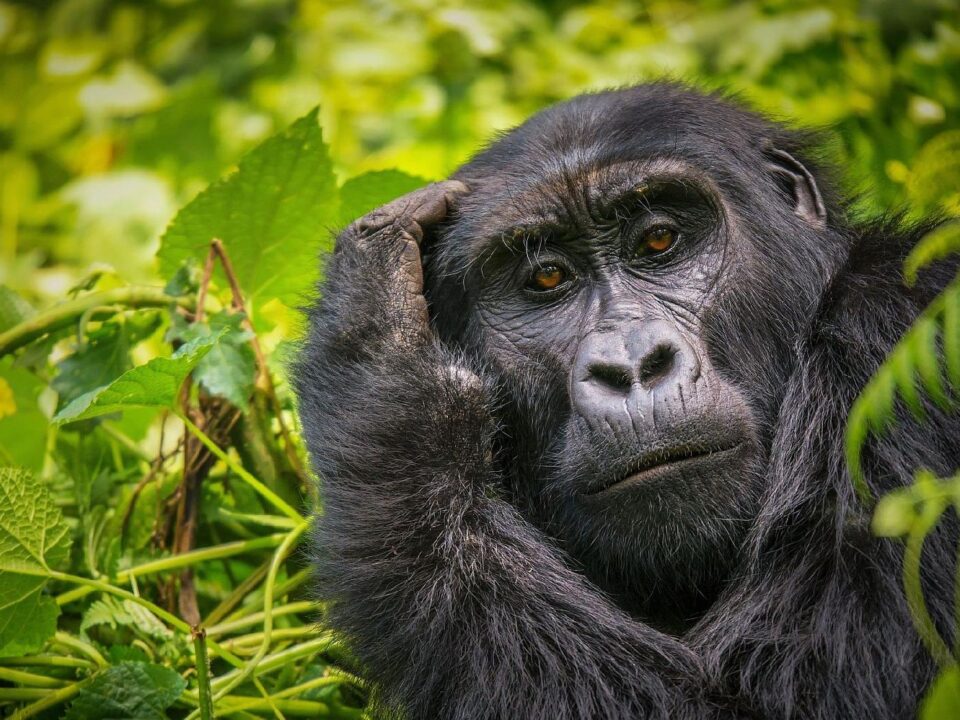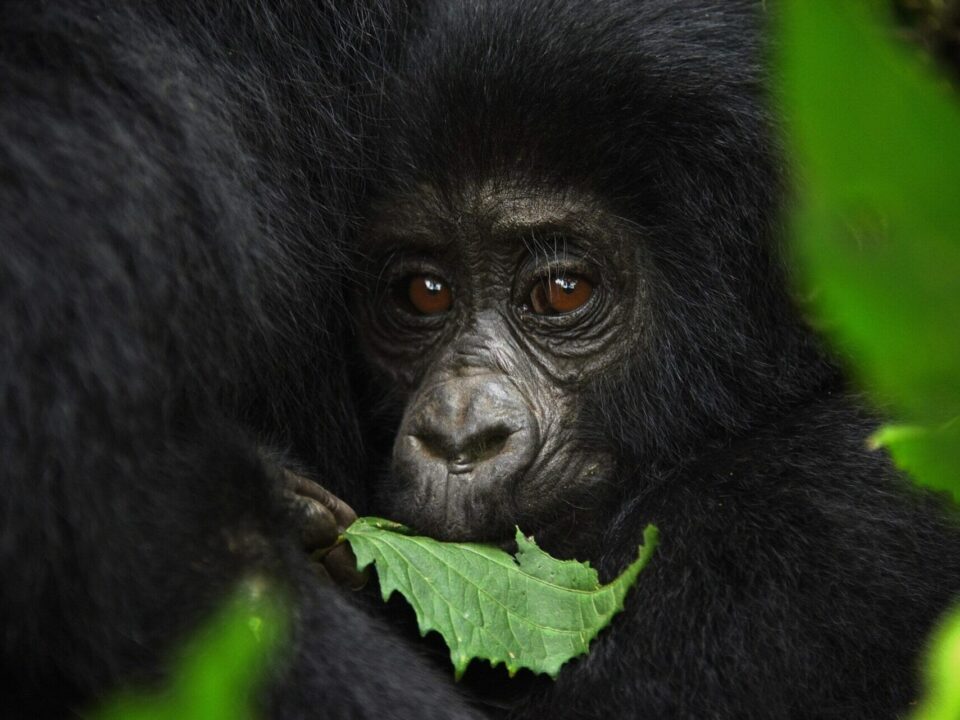What Sound do Mountain Gorillas Make?

Bwindi Gorilla Safari Bookings
August 8, 2023
Gorilla Tracking for Backpackers with Scheduled Dates
August 8, 2023Exploring the Vocalizations of Mountain Gorillas
Have you ever wondered what sounds resonate through the dense forests where mountain gorillas reside? Much like humans, gorillas employ a diverse range of communication techniques, using sounds that hold significance within their specific groups. These vocalizations mirror our own motivations for vocal expression. Gorillas utilize sound to convey information about food, engage in mating-related exchanges, administer discipline and support, express concerns, and convey emotions. Within their repertoire, some sounds convey happiness, playfulness, and contentment, while others encapsulate protectiveness, fear, or aggression. It’s worth noting that several of these sounds might not be easily distinguished, as they can vary between different groups. While there is no unified gorilla language, the various languages and sounds they utilize create a complex auditory landscape, making it a challenge to fully comprehend the entirety of their vocal repertoire.
The Variety of Gorilla Subspecies
Mountain gorillas, encompassing four primary subspecies, are divided between two species of gorillas. These remarkable creatures inhabit both the lush forests and lofty mountains, as indicated by their name – Mountain gorillas.
- Western gorilla
- Western lowland gorilla
- Cross river gorilla
- Eastern gorilla
- Mountain gorilla
- Eastern lowland gorilla
Notably, the term “silverback” doesn’t denote a distinct species of gorilla. Instead, it refers to older male gorillas that display the characteristic grayish-white hair on their shoulders and back. The vocalizations of gorillas sometimes offer insights into their sex and age.
Vocal Expressions of Mountain Gorillas
Unlike some animals that have distinct mating calls, gorillas don’t typically utilize a specific vocalization for mating. Instead, the mating process involves a female from the family approaching the dominant silverback. The female will then maintain eye contact with the male until he concedes, leading to the act of mating. On occasion, the dominant silverback might initiate mating by touching the female, emitting grunts, or even resorting to slapping and charging the female if met with resistance.
Researchers have managed to identify around 20 to 25 distinct gorilla sounds, although many of these sounds remain partially understood. With time and ongoing study, our comprehension of gorilla vocalizations continues to evolve.
Let’s delve into some of the well-identified gorilla sounds and their interpretations by researchers:
Gorilla Roar, Scream, and Hooting
A roar, scream, or hoot from a gorilla is an aggressive call often heard in tense situations. This display of power is accompanied by the charge of a gorilla, usually a silverback. With bared teeth, gorillas emit a resounding “wah” sound that effectively intimidates others, prompting them to retreat. This vocalization is predominantly associated with silverbacks.
The gorilla might resort to this sound when feeling threatened, whether due to another silverback or a younger male vying for dominance, or other potential dangers. It serves to frighten away perceived threats and is often accompanied by vigorous chest beating. Interestingly, this roar is sometimes preceded by absolute silence, during which the gorilla assesses the source of potential danger before unleashing its formidable call.
Chest Beat
The chest beat, popularized by movies, is a sound that many on a gorilla trek aspire to witness. Contrary to cinematic portrayals, gorillas execute this sound using open hands rather than clenched fists.
While it might appear aggressive, the chest beat is more about demonstrating strength and asserting dominance over both males and females within the group. It’s not an invitation to battle, but rather a display of authority.
Silence
Silence holds a notable place in primate communication, and gorillas are no exception. However, silence among gorillas isn’t necessarily indicative of comfort. When gorillas sense danger, they halt their activities and fall silent. During this time, they rely on non-verbal gestures to communicate before deciding on their next course of action. Abrupt silence often signifies the alert of potential disturbances.
Gorilla Belch
Also known as Belch Vocalization or a contact call, the gorilla belch is characterized by a deep, prolonged rumble or a “throat-clearing sound.” Typically initiated by the silverbacks within a gorilla band, other members follow suit.
This vocalization signifies contentment and non-aggression between individuals. It conveys a sense of acceptance toward visitors within their territory, indicating that they’re at ease with their presence. Visitors, both human and gorilla, can employ this sound to indicate they pose no threat to the group. Guides on gorilla treks might mimic this call for safety when approaching gorilla families.
Chuckling
Gorillas also exhibit a hoarse laughing sound, often referred to as chuckling. While this sound can come from younger gorillas, it’s not exclusive to any particular age group.
The chuckling sound reflects playfulness and joy, and sometimes serves as an invitation to engage in play. This infectious laughter-like sound can also be observed in the younger members of a gorilla troop, encompassing both laughter and the urge to involve others in their games.
Singing
A high-pitched sound akin to a dog’s whine is what gorillas produce during their singing episodes. This sound is a common feature among all gorillas, particularly when they’re eating. The act of “singing” among gorillas signals contentment, a reassuring note to the group that they’re in a state of harmony.
Whining and Crying
This sound bears a striking resemblance to the cries of human infants, occasionally escalating into shrill screams and shrieks akin to a toddler’s tantrum. This particular vocalization is often heard from gorilla infants.
The whining and crying sound typically emerges when a gorilla infant faces some form of discomfort or distress. This could include being in an awkward position, getting left behind by the group, separation from the mother, or requiring assistance.




